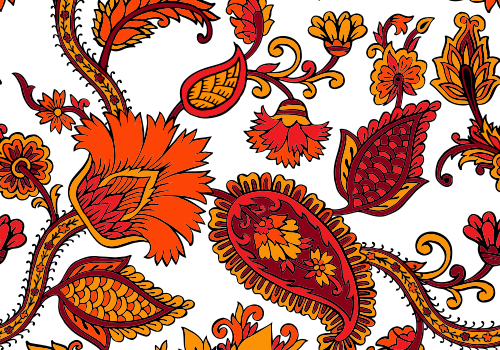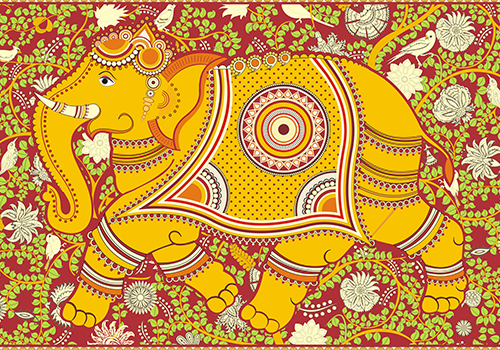Kalamkari is one such art form, which was first restricted to cotton fabric and then extended to being practiced on silks and other varieties of cloth too. It originated about 3000 years ago and derives its name from Kalam meaning Pen, and Kari meaning work. The Kalamkari artist uses a bamboo or date palm stick with fine hair attached on one end as a paintbrush. The colours used in making these paintings are organic and are prepared using roots and leaves of plants along with mineral salts.

Kalamkari was introduced as an art from via people called the Chitrakattis as they moved from village to village. The people were painters, singers and musicians and depicted stories in Hindu mythology. They used to paint scenes from stories onto large bolts of cloth and hold them up for the villagers to see. Slowly, temples began including Kalamkari illustrations on their walls too.
There are three kinds of Kalamkari artworks based on the techniques and motifs used. Golconda, a hub of Kalamkars, was ruled by Muslims and thus the motifs and designs used in Masulipatnam Kalamkari are Persian in style and themes. The outlines and main features are done using blocks while the pen is used for finer details. On the other hand, the Kalahasti tradition which developed in the temples mostly concentrated on themes written in Hindu epics like Ramayana, images of Gods, and heroes. Lastly, Karrupur is a style of Kalamkari art from the Thanjavur region during the Maratha rule. This work was a further embellishment to the gold brocade work in the woven fabric, which were used as sarees and dhotis by the royal family.
The colours used in Kalamkari are exquisite earthy tones of reds, blues, greens, yellows and browns. Women are depicted in shades of yellow, gods in blue and demons in red and green. The use of synthetic dyes is strictly forbidden and thus every colour is procured using natural means. Red dye is obtained from madder roots, yellow from pomegranate seeds or mango bark, and black from myrobalam roots.

Kalamkari art and artists have gained more fame gradually all over the country and worldwide due to the exports of their products. The artists who worked on the Kalamkari painting scrolls were known as Jadupatuas or Duari Patuas meaning 'magical painters'. European trading merchants called the process and art form 'chintz' after the British. The Dutch used the word 'sitz' whereas the Portuguese referred to it as 'pintado'.